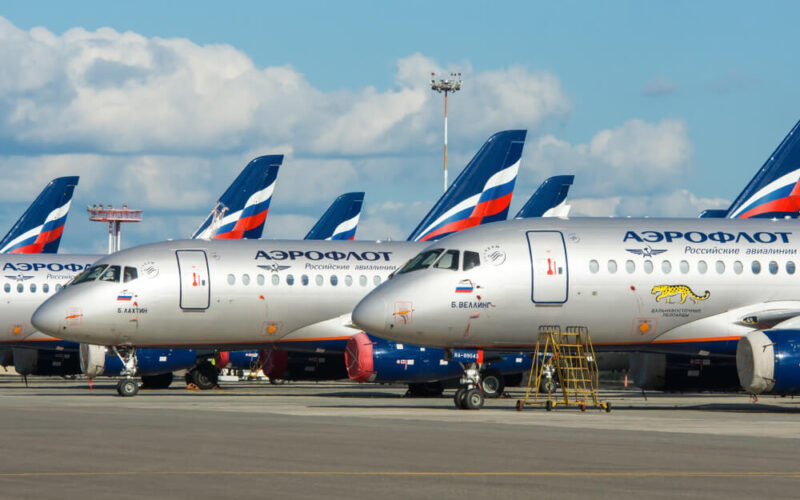Sukhoi Civil Aircraft, the company that produces the Superjet 100 regional passenger aircraft, said it had handed off the first five aircraft from a deal with Aeroflot, which is due to receive a hundred planes by 2026. The delivery of Superjet 100s to Aeroflot is funded by VEB.RF, the Russian state development corporation. The transaction is the largest one for both the plane manufacturer and the airline, according to Sukhoi.
Aeroflot and United Aircraft Corporation, the parent company of Sukhoi Civil Aircraft, shook hands for an order of 100 Superjet 100 aircraft back in September 2018. Under the initial agreement, the aircraft were supposed to be delivered between 2019 and 2026.
Aeroflot is the biggest operator of Russian aircraft. Having introduced the Superjet 100 for passenger service in June 2011, the country’s national carrier is now the largest operator of the regional jet in the world with 49 jets in its fleet. This is a little under half of all Superjet 100s currently in service, as the active fleet currently stands at 119 aircraft, according to planespotters.net data.
Besides the order for an additional hundred of Superjet 100s, Aeroflot also has an order for 50 MC-21 ‒ Russian commercial passenger aircraft currently in development. The airline is the launch customer of the aircraft, which is due to enter service in 2020-2021. The carrier would also be the first to introduce MC-21 powered by Russian-made engines Aviadvigatel PD-14.
The news of the 100 Superjet 100 deliveries start came at the very end of 2019 ‒ a difficult year for Sukhoi.
On May 5, 2019, Aeroflot Superjet 100 (registration number RA-89098) with 78 people onboard crash landed in Sheremetyevo International Airport (SVO), Moscow. During the emergency landing of Flight 1492, the aircraft caught on fire and was damaged beyond repair. During the fire, forty-one people were killed and eleven injured.
In the aftermath of the accident, Aeroflot has denied the flight crews’ fault, but the captain of the flight has been charged for criminal negligence nevertheless. The initial accident investigation report (released on June 5, 2019) has provided recommendations to both the design of the aircraft and “Extended Envelope Training” for pilots.
In early 2019, CityJet, the last European operator to have Superjet 100 in its fleet, returned its last jets to the owner. Reportedly, the decision was based on a huge lack of spare parts, which had caused prolonged groundings of the aircraft. The return came after Brussel Airlines, which wet-leased the Superjet 100s to CityJet, renounced the use of the aircraft the previous year.
Hopes of seeing the aircraft return to European operators went down in April 2019. Adria Airways, which held a preliminary order for 15 SSJ100s, decided not to proceed with the deal and canceled the order.
Meanwhile, multiple reports throughout the year have indicated that Superjet100 was also counting the last days of operations with its only remaining international customer. Mexican airline Interjet has 22 Russian-made aircraft in its fleet, but the vast majority of them, 16, are grounded. The airline has reportedly been looking to return its full Superjet 100 fleet, or as much of it as possible, as it had struggled to pay for repairs of mechanical issues with the PowerJet SaM146 engines and had “cannibalized” (scrapped for parts to repair other aircraft) several of its aircraft.
On a positive note, in October 2019, Sukhoi Civil Aircraft finished the flight test program of the Superjet 100 new horizontal wingtips called saberlets. With the promise to reduce fuel consumption by at least 4%, the new technology would allow to improve Superjet 100 take-off and landing performance and make the aircraft more appealing to airlines operating on regional runways, in hot weather conditions and on mountain aerodromes.
Also starting in 2020, United Aircraft Corporation is starting to form a new model for full-scale technical support for Superjet 100 operators, according to the company’s general director Yury Slyusar cited in a statement by Sukhoi Civil Aircraft.

